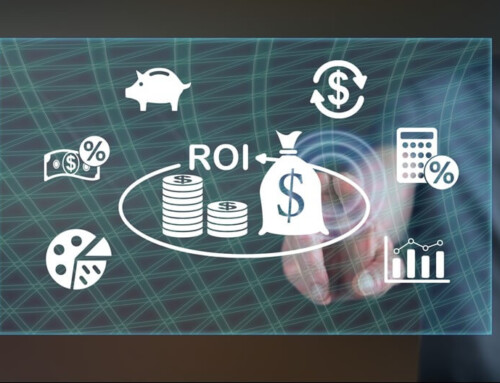A responsible, experienced, and skilled meeting planner will always take environmental and social issues into account when organizing corporate events. Whether the meeting is held virtually or in person, these issues are at play in some way, shape, or form.
Planning a corporate event is no small feat. It requires taking care of many details, from the minute ones to the enormous ones. Environmental and social concerns are among the details that should never be overlooked, as they factor heavily into the big picture.
The good news is that by using a little ingenuity and creativity, you can address these issues while planning a meeting that engages, inspires, and educates attendees. Here, get strategies for pulling it off like a pro.
FOCUS ON OFFSETTING, NOT MINIMIZING, THE CARBON FOOTPRINT
In a perfect world, you could shrink your event’s carbon footprint to near zero. Realistically, given the many different aspects of both in-person and virtual events, doing this is not feasible. However, that does not mean you are powerless.
The solution? Instead of minimizing your carbon footprint, focus on offsetting it.
Strategies For In-Person Meetings
Use local vendors
When you choose local vendors for supplies and services, you greatly decrease the amount of fossil fuels emitted, and air pollution created, in two ways:
- The vendor does not have to transport the goods a long way or travel a long distance to provide their services.
- Local businesses primarily serve their own community, meaning their customers travel a short distance to frequent them. By purchasing their products or services, you help to keep these organizations in business.
Considering that fossil fuels account for over 75% of global greenhouse gas emissions and nearly 90% of all carbon dioxide emissions (1), using local vendors can make a significant positive impact on your event’s carbon footprint.
Opt for recycled and reusable supplies
Recycling and reusing are two classic eco-friendly strategies that you can easily incorporate in certain ways. Examples that work for nearly any type of meeting include:
- Choosing washable cloth napkins over their paper counterparts.
- Providing reusable flatware instead of plastic utensils that get thrown out.
- Serving food on dishware that can be washed and reused.
- Ordering signage that is evergreen and can be used at other events.
PRO TIP: When ordering signage consider signs that use soybean ink or recycled cardstock. - Providing recycling bins for lanyards and plastic badge holders.
- Stuffing swag bags with reusable water bottles and coffee thermoses.
The bonus of reusing and recycling is that, in most cases, you will benefit your budget while helping the planet.
Institute paperless practices
Many of the paperless practices commonly used for virtual events also work for in-person events. And two of them can make a huge difference in offsetting the meeting’s carbon footprint.
The first one is registering attendees, and sharing information with them, on a free app designed specifically for the events your organization hosts. Share QR codes with attendees that give them direct access to information they might need. And make sure the functionality of the app is extraordinarily intuitive and easy to use for even the least tech-savvy attendees.
Keep all your marketing efforts for the meeting digital. This practice is not a big leap for most companies, as the vast majority of them already communicate digitally. Do away with any mailings you might have sent in the past and replace them with digital forms of communication.
Strategies For Virtual Meetings
There is a widely held misconception that virtual meetings are vastly more sustainable than in-person events and that they have little to no carbon footprint. However, this is not the case. Online meetings create what is known as digital pollution ─ and this form of pollution is harmful in its own right. In fact:
- Digital pollution produces nearly 3.8% of global greenhouse gas emissions ─ the equivalent of about 116 million car trips around the world.
- Digital power consumption is increasing by 9% per year.
Source: (2)
Digital pollution is the carbon emissions produced while manufacturing digital tools and while participating in digital activities. Examples of the latter include sending emails with attachments and storing large amounts of data in the cloud.
So, when considering the impact of virtual events, you must include both forms of digital pollution. This means that, while they might appear eco-friendly at first glance, online events hit the environment with a double whammy.
Cutting down on digital pollution created by digital activities is similar in a sense to reducing physical waste. Ultimately, it comes down to leveraging digital activities in a more efficient way. For example:
- Instead of uploading attachments to event-related emails, utilize drop-off sites.
- Delete attachments from emails you receive from others about meetings.
- If sending files is unavoidable, optimize the size of each file.
- Delete emails that you no longer need to save.
- Store only the files and resources from past events that you still need in the cloud.
STRIKE A SOCIAL BALANCE THAT CREATES AN IMMERSIVE EXPERIENCE
A pivotal part of organizing a successful meeting is finding the perfect balance with the social elements of it. This can entail taking several different approaches.
Strategies for In-Person Meetings
Dive into local culture
In-person events offer the opportunity for attendees to experience the local culture ─ an area in which their virtual counterparts cannot compete. So, when it comes to the social aspects of in-person meetings, incorporating local flair is an opportunity you should seize. Examples of how you can do so include:
- Businesses (for supplies and services)
- Entertainment (live music, dance shows, comedy routines, magicians, and artisans)
- Restaurants (catered food at the venue and meals offsite)
Get expertise from locals
Obtaining input from locals is another great way to create balance. Ask the people who live and work in the area for their recommendations on hotels, restaurants, stores, transportation, and entertainment. Not only will getting their take help balance your meeting, but it also improves the chances of having top-tier experiences.
Make accessibility a top priority
Chances are good that your attendees will have differing levels of physical ability and learning styles. It is critical to make everyone feel welcomed, respected, and acknowledged by prioritizing accessibility. This might include:
- Supporting different styles of learning with educational tools that accommodate visual, auditory, reading/writing, and kinesthetic learners.
- Awareness of sensory personality characteristics such as high sensitivity person among your attendees.
- Choosing a venue with restrooms that follow Americans with Disabilities Act (ADA) guidelines if necessary for your attendees.
- Hiring a sign language interpreter for educational sessions, speaker sessions, and networking sessions if required for your attendees.
Strategies for Hybrid Meetings
Address unconscious biases
Assumptions and biases are part of everyone’s DNA and leaders are no exception. Sadly, both can impact hiring practices, company culture, the way meetings are conducted, decision-making, growth potential, and more. Awareness that unconscious biases and assumptions exist is critical to fostering an environment that invites effective participation. Encourage your team to evaluate their own unconscious assumptions by considering examples that illustrate the point. For example:
- A participant won’t know how to use technology or is unwilling to learn new skills due to age, job longevity, or current role.
- A participant spends too much time utilizing technology and can’t communicate in person due to age or current role.
Feature a large variety of ages…and roles
It is tempting to assume that the older someone is, the more knowledge they will possess. However, people of all ages, job longevity, and roles can contribute valuable expertise to your event. By appointing people like a speaker or panelists with a diversity of experiences, you will showcase a refreshing mix of skill sets, knowledge, and perspectives. It will also enrich the experience for attendees.
Establish communication guidelines
A respectful space where everyone feels comfortable expressing their thoughts, and ideas, and engaging in healthy conflict is part of a productive meeting. Emphasizing active listening, valuing diverse perspectives, resisting judgment, and avoiding interruptions is essential to meetings that achieve goals. Additionally, when everyone is actively involved, and no one is overshadowing others this strengthens the team and collaborative environment.
PRO TIP: Some people will be more talkative and others less inclined to speak up. When leading a meeting avoid favoring individuals who offer input freely. Instead, directly ask for input from quieter individuals to gain more rounded perspectives, ideas, etc. Alternately consider round-robin discussions that provide equal opportunities for participation.
Use clear language
Language and terminology used shouldn’t be a stumbling block during a meeting. Avoid the use of jargon or acronyms. Provide clear explanations and definitions to ensure that everyone in the meeting comprehends terminology before moving forward.
Encourage collaboration
Foster an environment that promotes collaborative problem-solving and encourages a variety of different perspectives. Participants should be encouraged to brainstorm, build on each other’s ideas, and feel comfortable sharing thoughts and suggestions. This not only leads to problem resolution but innovation.
PLAN MORE IMPACTFUL MEETINGS
When you address and incorporate environmental and social issues in the events you plan, you position meetings to have a more meaningful impact on attendees. It is events like this that stand the best chance of leaving those who attend them with lasting, and overwhelmingly positive, takeaways.
Do you want your next corporate meeting or event to consider environmental and social issues as part of your event planning? If so, contact Gavel International to see how working with a meeting planning company can benefit your organization.
_______________________
SOURCE(S):
1 https://www.un.org/en/climatechange/science/causes-effects-climate-change
2 https://green-hero.info/en/digital-pollution/
- A Meeting Planner’s Guide to Using Drone Photography - April 15, 2024
- 11 Essential Items a Meeting Planner Must Have in an Event Kit - March 25, 2024
- Gavel International Joins in Global Meetings Industry Day 2024 (#GMID2024) Celebration - March 22, 2024







